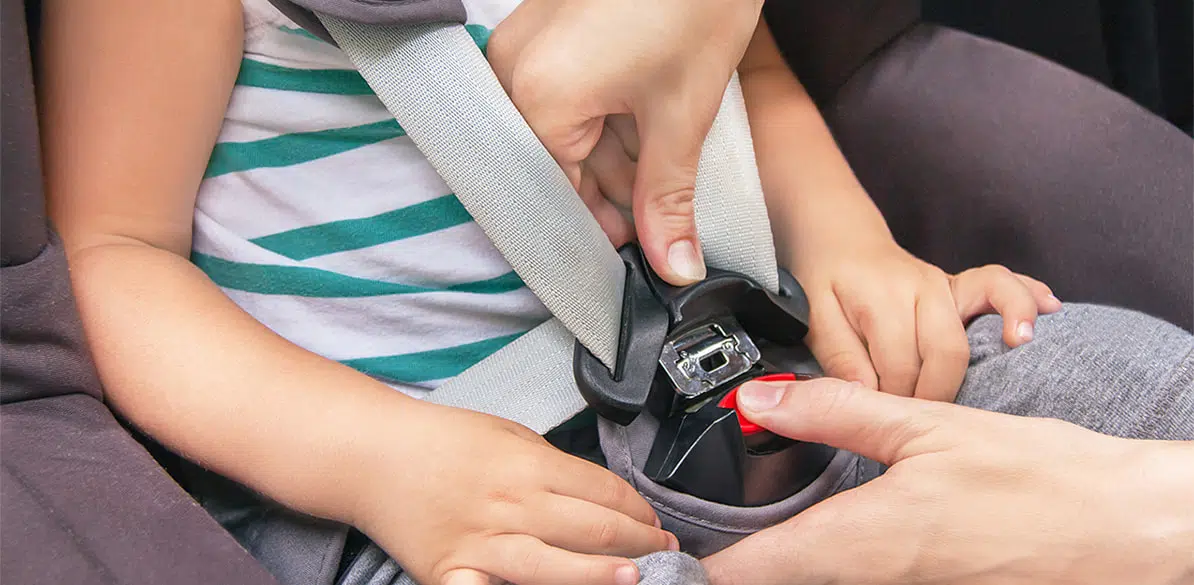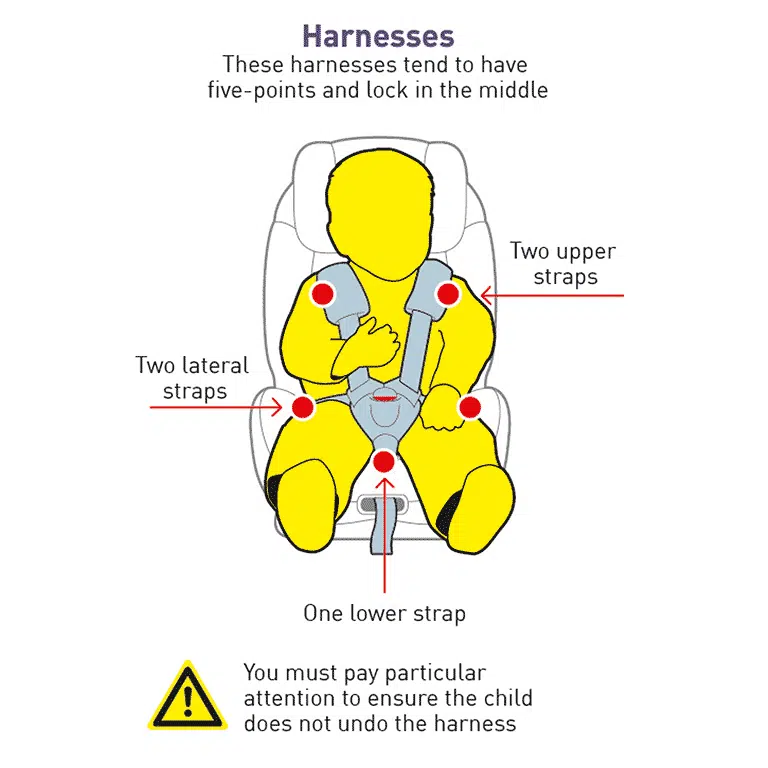Steps to correctly position a child in a child car seat

Road safety
Choosing a suitable child restraint system that meets our needs is very important, but so is correctly installing the seat and properly securing the child. These three factors must go hand in hand to ensure the safety of children on their journeys. The following are the key points to consider to ensure the child is correctly fitted in the child restraint system.
First of all, there are five-point harnesses (the most common kind and the one that provides most protection), three-point harnesses, and with a middle buckle in both cases.

When using a booster seat, with or without a backrest, the seat belt is in charge of securing the child. We will address this in more detail here below.
Steps to follow for a correct adjustment
- Before placing the child in the child seat, check that the restraint system is correctly installed. Check that it is not loose, that the ISOFIX system is securely anchored (there is usually a device that turns green and indicates that it is correctly installed) or, if the seat does not have ISOFIX, that the belt passes through each and every one of the slots indicated by the manufacturer. Also check that the Support Leg or Top Tether is correctly positioned – the top tether must be correctly tensioned, while the support leg must be in contact with the floor of the car – that the seat is correctly reclined and that it has the reducer if necessary (for newborns).
- Remove the child’s bulky clothing such as a coat, as it gives a false sense of safety. The most common mistake is failing to tighten the harness enough. It could also cause the so-called submarine effect.
- Place the child in the chair and pass the child’s arm through the respective harnesses. The two upper straps should lie across the shoulders and the two lower straps across the hips. They must not be twisted. Fasten the middle buckle following the manufacturer’s indications. Remember to adapt the height of the harness to the child’s height. As the child grows, the harness must be adjusted accordingly. The upper straps should lie at shoulder level or slightly below if the child seat is rear-facing, and at shoulder level or slightly above if the child seat is forward-facing. Once all possible adjustable positions have been used it is time to change the seat for a larger one.
- Then, adjust it correctly. Remember that a tight harness is a safe harness. You can check that it has been correctly adjusted if two of your fingers fit between the harness and the child’s body. Another tip: if you can “pinch” the strap, the belt is too loose and could be dangerous. The harness must be as tight as possible without being uncomfortable for the child.
These recommendations are valid for both rear-facing and forward-facing car seats. Regarding booster seats where the child uses the seat belt, the following recommendations must be followed:
- You must also place the child in the booster seat without a coat as it could be equally dangerous.
- You must fasten the seat belt exactly the same as an adult would, as the goal of a booster is to elevate the child so that the seat belt fits correctly.
- Please remember that seat boosters with backrests are safer, as they offer greater protection for side impacts and for the child’s head. The backrest also helps avoid making mistakes when securing the child, as there are slots the straps have to go through, hence avoiding mistakes. In all cases, the diagonal belt strap must lie on the collarbone, over the shoulder and close to the chest, while the lower strap must lie on the hips or the upper thighs. In addition, the backrest helps maintain the child’s position when he or she falls asleep.
- Under no circumstances should they travel with the harness or seat belt unbuckled, twisted or incorrectly fittedsuch as with one arm out or the top part removed.
Finally, it is important to remember that child restraint systems must be used up to 135 cm, although it is advisable to continue to do so up to 150 cm, at which point the adult belt will fit properly. Note that if the shoulder strap touches the neck or goes under the chin, the child should continue to use a booster seat, preferably with a backrest.
